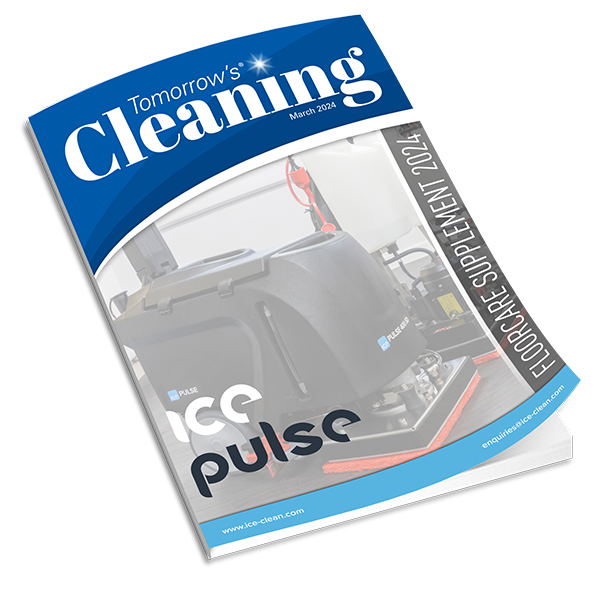Main Information
You are here
- Home
- >
- ETS FIS/HIS
ETS To Share Latest Research On Hand Drying At FIS/HIS 2016

Published on 12/09/2016
The European Tissue Symposium (ETS) has confirmed its presence at the FIS/HIS conference 2016, held in Edinburgh from 6-8 November. The joint conference of the Federation of Infection Societies (FIS) Annual Conference and the 10th Healthcare Infection Society (HIS) International Conference 2016 will gather scientists, microbiologists and other experts from around the world over a three day conference.
In addition to taking booth 18 in the Lennox hall, ETS will be hosting a symposium entitled: ‘The Risk Of Microbe Dispersal During Hand Drying’ on Monday 7th of November at 5PM in the Sidlaw room, sharing the recent results from research highlighting the alleged superiority of single-use towels in ensuring optimal hygiene levels in public washrooms.
During the symposium, there will be two keynote presentations:
The first of which – ‘The Risk Of Microbe Dispersal And Aerosolisation By Different Hand-Drying Methods Used In Public Washrooms’ – will see Emeritus fellow microbiologist Keith Redway from the Department of Biomedical Sciences, University of Westminster, present the results of his research on the risk of microbe dispersal during hand drying, including key facts and figures that describe the spread of viruses.
Following this, the second presentation – ‘Markedly Variable Risks Of Bacterial Dissemination According To Choice Of Hand Drying Method’ – sees leading medical microbiologist Professor Mark Wilcox, of the University of Leeds and Leeds Teaching Hospitals, present data demonstrating the marked variation in extent of bacterial spread according to hand drying method. The potential implications of these results for infection control will be discussed.
Previous studies undertaken by the Universities of Leeds and Westminster have shown that electric hand dryers are more likely to disperse bacteria and fungi than single-use towels. In the latest study by the University of Westminster, a bacteriophage model was used to compare three different hand-drying methods for their potential to disperse the virus and generate aerosols to contaminate other persons, the washroom environment and the air during use.
“It is an honour for us to be able to share the latest developments in hand drying research at such a relevant event,” said ETS chairman, Roberto Berardi. “Appropriate hand drying after hand washing in public washrooms is essential in helping to minimise the spread of infection.
“Our industry places great emphasis on hygiene, and studies have consistently shown that single-use towels offer the most effective way to help limit the spread of microbes in the washroom. These recent results indicate that the type of hand-drying device offered in public washrooms should be carefully chosen, especially where there are overriding cross-contamination concerns such as in hospitals and the food industry.”
www.europeantissue.com
In addition to taking booth 18 in the Lennox hall, ETS will be hosting a symposium entitled: ‘The Risk Of Microbe Dispersal During Hand Drying’ on Monday 7th of November at 5PM in the Sidlaw room, sharing the recent results from research highlighting the alleged superiority of single-use towels in ensuring optimal hygiene levels in public washrooms.
During the symposium, there will be two keynote presentations:
The first of which – ‘The Risk Of Microbe Dispersal And Aerosolisation By Different Hand-Drying Methods Used In Public Washrooms’ – will see Emeritus fellow microbiologist Keith Redway from the Department of Biomedical Sciences, University of Westminster, present the results of his research on the risk of microbe dispersal during hand drying, including key facts and figures that describe the spread of viruses.
Following this, the second presentation – ‘Markedly Variable Risks Of Bacterial Dissemination According To Choice Of Hand Drying Method’ – sees leading medical microbiologist Professor Mark Wilcox, of the University of Leeds and Leeds Teaching Hospitals, present data demonstrating the marked variation in extent of bacterial spread according to hand drying method. The potential implications of these results for infection control will be discussed.
Previous studies undertaken by the Universities of Leeds and Westminster have shown that electric hand dryers are more likely to disperse bacteria and fungi than single-use towels. In the latest study by the University of Westminster, a bacteriophage model was used to compare three different hand-drying methods for their potential to disperse the virus and generate aerosols to contaminate other persons, the washroom environment and the air during use.
“It is an honour for us to be able to share the latest developments in hand drying research at such a relevant event,” said ETS chairman, Roberto Berardi. “Appropriate hand drying after hand washing in public washrooms is essential in helping to minimise the spread of infection.
“Our industry places great emphasis on hygiene, and studies have consistently shown that single-use towels offer the most effective way to help limit the spread of microbes in the washroom. These recent results indicate that the type of hand-drying device offered in public washrooms should be carefully chosen, especially where there are overriding cross-contamination concerns such as in hospitals and the food industry.”
www.europeantissue.com
Categories
- Automated systems
- Carpet and upholstery care
- Charity & Fundraisers
- Cleaning chemicals
- Cleaning equipment
- Cleaning Events
- Cleaning Industry News
- Cleaning News
- Commercial laundry
- Contract cleaning
- COVID-19
- Disposables
- Dosing equipment
- Educational and school facilities
- Event clean-up
- Facilities Management
- Floorcare and maintenance
- Food safety
- Health and safety
- Healthcare hygiene
- Hires
- Industry Comment
- Interclean amsterdam
- Leisure and hospitality
- London cleaning show
- Manchester Cleaning Show
- Mobile cleaning solutions
- Municipal cleaning
- Pest control
- Products and Services
- Recruitment
- Retail cleaning
- Specialist cleaning
- Steam cleaning
- Street sweepers
- Sustainability
- Technology
- Tenders
- Training and education
- Trauma cleaning
- Vacuums
- Washroom hygiene
- Waste management
- Window cleaning
- Working at height








































